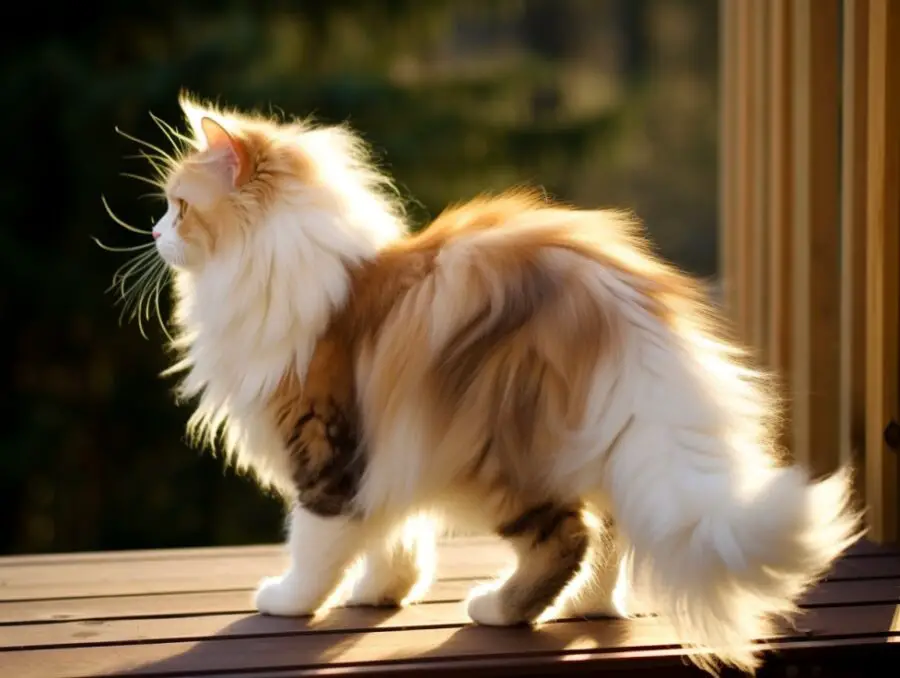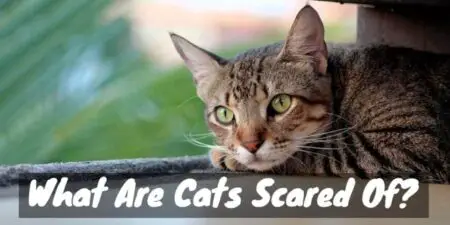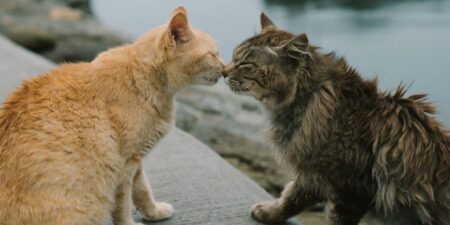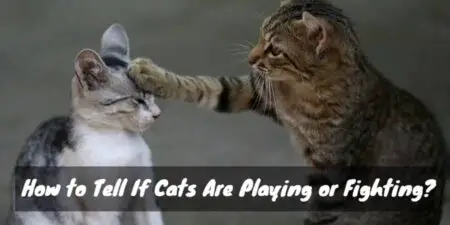When it comes to cats, one of the most intriguing aspects is their behavior – and the puffy tail is no exception. But what causes this peculiar phenomenon? Let’s explore the various reasons behind a cat’s puffy tail.
Emotions
First, a puffy tail is often a sign of fear or agitation. When a cat feels threatened, its body releases adrenaline, a hormone that prepares it for a fight or flight response. This adrenaline rush causes the hair on the cat’s tail to stand up, creating a puffy appearance. This is a natural defense mechanism designed to make the cat appear larger and more intimidating to potential predators or rivals.
Another reason for a puffy tail could be related to excitement or arousal. Sometimes, a cat’s tail will puff up when it is playing or hunting. This is again related to adrenaline release and the boost of energy it provides. While the cat may not necessarily be afraid in these situations, the increase in adrenaline can still cause the tail to puff up.
It’s also worth noting that cats communicate with their tails. A puffy tail, combined with certain body language, can be an indication that the cat is upset or annoyed. For instance, a cat with a puffy tail and flattened ears is likely feeling anxious or afraid, whereas a cat whose tail is puffed but ears are upright might be more excited than scared.
Medical Issue
In some cases, a cat’s tail may become puffy due to a medical issue. For example, a tail injury or an underlying skin condition may cause a cat’s tail to swell or the hair to stand on end. If you notice your cat’s tail is consistently puffy without any apparent triggers or if you suspect a medical issue, it’s important to consult a veterinarian for a proper evaluation and treatment.
Environment
Another factor to consider is the environment in which the cat lives. Stressful environments or significant changes in the cat’s surroundings can lead to a higher probability of a puffy tail. Ensuring that your cat has a safe and comfortable environment to retreat to and minimizing abrupt changes can help reduce the chances of your cat exhibiting this behavior.
To better understand your cat’s behavior and emotions, it’s essential to pay close attention to their body language as a whole. The position of their ears, eyes, and whiskers can provide valuable insight into how your cat is feeling. Observing these cues in conjunction with a puffy tail can help you determine whether your cat is feeling frightened or excited or if there is a medical concern.
Conclusion
While a cat’s puffy tail is a fascinating and sometimes amusing feature, it’s important to respect her emotional state when it occurs. If your cat is displaying a puffy tail due to fear or agitation, give them space and time to calm down. Avoid forceful interactions or further frightening them, as this may lead to unwanted aggressive behavior.
A cat’s puffy tail can be attributed to various factors, including fear, excitement, communication, medical issues, and environmental stressors. Understanding these triggers and observing your cat’s body language can help you better care for your furry companion and ensure they lead a happy, healthy life.
What Does It Mean When a Cat’s Tail Is Puffed Out? (Video)
"In ancient times cats were worshipped as gods; they have not forgotten this."
-- Terry Pratchett





